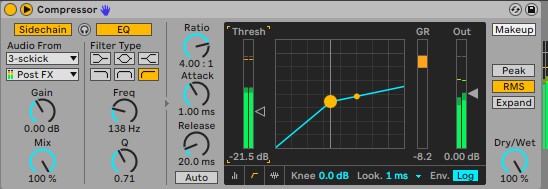Crafting a Tech House Bassline with U-He Diva: A Step-by-Step Guide
In the realm of Tech House production, the bassline is not just a component; it's the pulsating heart that drives the track forward. U-He Diva, with its authentic analog sound and versatile synthesis capabilities, stands as an exemplary tool for creating such vital basslines. This comprehensive guide dives deep into utilizing Diva to design a bassline that embodies the essence of Tech House, combining warmth, depth, and groove.
Step 1: Starting with the Right Foundation
Choosing Your Oscillator Setup
To kick off, an understanding of Diva’s oscillator configurations sets the stage for our bass sound. The Minimoog template is an excellent starting point for its notoriously rich and warm bass tones.
Sawtooth and Square Waves: The combination of a sawtooth wave in OSC 1 and a slightly detuned square wave in OSC 2 lays the foundation for a complex, full-bodied sound. This blend offers the perfect mix of harmonic richness and sonic width essential for cutting through a dense mix.
Step 2: Sculpting the Tone
Dialing in Filters and Envelopes
The next step is shaping our raw oscillators into a compelling bass voice using Diva’s filters and envelopes, crucial for defining the character and responsiveness of the sound.
Ladder Filter Magic: The Ladder filter, known for its smooth rolloff and musical resonance, is our filter of choice. Adjusting the cutoff to focus on the bass frequencies and adding a slight resonance brings life to the sound, making it resonate with the track's vibe.
Envelope Crafting: The filter and amplitude envelopes (ENV 2 and ENV 1) are meticulously adjusted to sculpt the transient response and sustain of our bassline, ensuring it sits perfectly within the rhythm section, providing both punch and a smooth decay.
Step 3: Infusing Movement
Introducing Modulation
To prevent our bassline from sounding static, we introduce modulation. This step is about breathing life into the sound, making it groove with the track.
Subtle LFO Modulation: A touch of LFO modulation on the filter cutoff introduces a gentle, living quality to the bass, suggesting movement and energy without overt distraction.
Dynamic Playability: Incorporating velocity sensitivity allows the bass to react to the intensity of play, adding an expressive dimension to the performance. This dynamic interplay enriches the bassline, making it feel alive.
Step 4: Enriching the Sound
Onboard Effects for Depth and Character
Utilizing Diva’s onboard effects can elevate a solid bass sound to a standout element in your track, enriching it with layers of sonic texture and depth.
Chorus and Moog-Style Feedback Circuit for Distortion:
Chorus: Applying Diva's chorus effect can subtly widen the stereo image of your bassline, adding spatial depth without compromising the core mono signal. This enhancement is particularly effective for creating a sense of movement and dimension in Tech House tracks.
Moog-Style Feedback Circuit: While Diva doesn't have a dedicated distortion effect, you can achieve a warm, analog-style distortion by creatively using the feedback circuit inspired by Moog synthesizers. Route a portion of the output back into the filter's input to introduce harmonic saturation and a touch of aggression. This technique adds presence and character, ensuring the bassline cuts through the mix with authority.
By carefully applying these onboard effects, you can impart your basslines with a distinctive character and sonic richness, essential for crafting memorable Tech House tracks that resonate on the dance floor.
Step 5: Polishing with External Processing
Compression, EQ, and Sidechain
The final touches involve external processing to ensure the bassline meshes seamlessly with the track, maintaining both its distinct character and supporting the overall mix.
Compression and EQ: Strategic compression smooths out dynamics for consistent energy, and EQ adjustments carve space in the mix, particularly around the kick drum frequency range.
Sidechain for Groove: Sidechain compression, keyed to the kick, introduces that quintessential Tech House pump, enhancing the rhythmic connection between the bassline and the rest of the track.
Conclusion
Crafting a Tech House bassline with U-He Diva is a journey through sound design, modulation, and mixing. Each step, from selecting the initial oscillator setup to the final external processing, is pivotal in creating a bassline that not only supports but enhances the overall track. By diving into these detailed processes, you gain not just a deeper understanding of Diva’s capabilities but also a toolkit for designing basslines that resonate with the essence of Tech House.





























